Struggling with growing tomato plants in Florida? You’re not alone and what you’re about to read might just save your next season. Most gardeners make the same early mistakes I did, assuming what works elsewhere will work here. But Florida doesn’t play by the usual gardening rules, and I had to learn that lesson the hard way.
In This Article
When I first moved here, I treated my tomato garden like I did back home. I planted too late, used generic potting soil, and didn’t give much thought to pests or humidity. Within weeks, my tomato seedlings were sunburned, stunted, and full of holes. It was frustrating, discouraging, and felt like all my hard work had been wasted.
But that failure was the turning point. I began studying Florida’s microclimates, testing different soil amendments, learning to prune early, and selecting tomato varieties bred for heat and humidity. Over time, I built a system that worked.
Whether you’re in North Florida or soaking in the South’s subtropical heat, this guide is here to help you avoid the mistakes I made and grow tomatoes that truly thrive in Florida’s wild weather. And if you’re also curious about planting tomatoes in Texas or want to get back to basics with planting tomato seeds, I’ve got separate guides that walk you through those regional and beginner-specific steps.
Growing Tomato Plants in Florida
Growing Tomato Plants in Florida create both opportunity and risk. Unlike other states, Florida’s extended warm season allows for multiple tomato crops per year. But that same heat fosters aggressive pests and diseases.
When I first moved to Orlando, I tried using a New Jersey planting calendar. Big mistake. My tomatoes wilted before June even hit. The lesson? Timing and plant selection must be Florida-specific.
Florida gardeners deal with rapid temperature swings, unexpected downpours, and ever-present threats like fungal blight. But these challenges also force us to become sharper growers. For example, planting tomatoes in Florida means you can often start earlier and harvest longer but only if you’re prepared to manage heat stress and moisture control.
Success comes down to understanding local conditions: adjust watering frequency during wet seasons, choose cultivars that thrive in humidity, and plant with airflow in mind. And if you’re sharing your garden space with little helpers, incorporating a few gardening activities for preschoolers can turn planting time into something even more rewarding.
Top Florida Tomato Plants
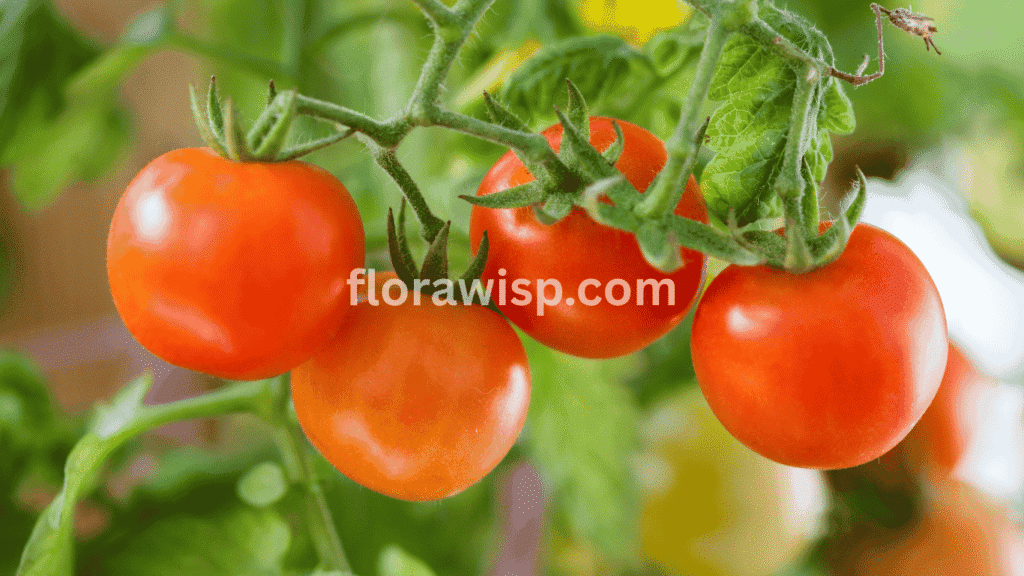
After years of trial, I’ve found that not all tomato varieties handle Florida’s climate the same way. Some bolt under pressure, while others thrive.
For dependable harvests, focus on Florida tomato plants that are either bred for heat or have proven resistant to disease. Determinate types like ‘Florida 91’ and ‘Heatmaster’ perform exceptionally in early spring crops. Indeterminate varieties like ‘Better Boy’ and ‘Cherokee Purple’ give longer yields if you’re prepared to manage their size.
When planting tomatoes in Florida, I’ve had the best luck rotating between hybrids and heirlooms depending on the season. In South Florida’s milder winters, I prefer hybrids for consistent output. Up north, I experiment with heirlooms in raised beds where I can control soil and water.
Also, match your plant choices to the microclimate of your region; windier coastal zones may favor low-growing varieties, while inland spots can handle taller vines. Don’t guess; test different cultivars, track their results, and build your own regional tomato list.
Planting Tomatoes in Florida: Seasonal Guide by Region
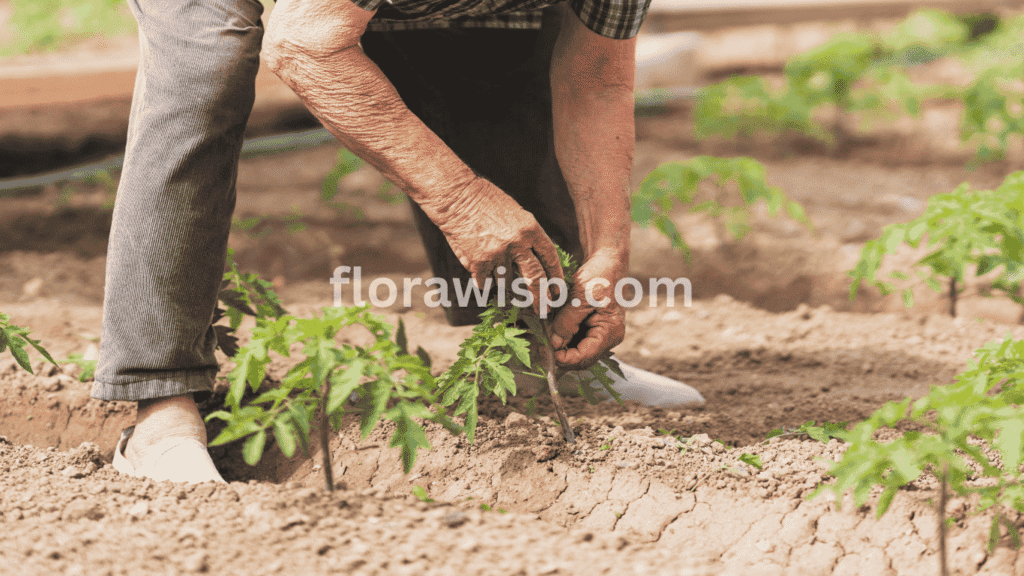
Timing is everything when growing tomato plants in Florida, and that’s never truer than when you break it down by region.
- North Florida: Start seeds in late January and plant out in early March. Fall planting is possible in August if you beat the frost.
- Central Florida: Aim for February–March and again in late August. I always cover new seedlings during unexpected cold snaps.
- South Florida: The season stretches from September to February. Avoid planting in summer heat and rain can wipe out young plants.
Each region’s planting calendar ties into frost dates, humidity patterns, and daylight shifts. When I lived in Tallahassee, planting in February meant fighting cold snaps. In Tampa, I could start a full month earlier.
For beginners, using a soil thermometer helped me avoid early losses. I wait until the soil holds above 60°F consistently. Combining that with watching local agricultural bulletins allowed me to fine-tune planting dates for bigger, healthier crops.
Best Tomato Varieties for Florida Heat and Humidity
Over the years, I’ve learned that the wrong variety equals a dead plant. Florida tomato plants need to be tough, and not every seed packet at the store cuts it.
Top performers include:
- Florida 91: Built for heat and disease resistance.
- Solar Fire: Handles high temperatures without sacrificing flavor.
- Heatmaster: Perfect for summer transitions.
- Better Boy: Balanced flavor and great for larger yields.
I rotate between these depending on season and purpose. For fresh eating, ‘Better Boy’ and ‘Cherokee Purple’ win. For volume and storage, ‘Florida 91’ is unbeatable. If you’re planting tomatoes in Florida for the first time, stick to hybrids. Once you’ve mastered timing and soil, heirlooms become a fun challenge.
It took me three failed seasons to realize that disease resistance is just as important as taste in our climate. Now, I only plant varieties that list resistance to wilt, nematodes, and early blight on the label.
How to Grow Tomato Plants in Florida
Growing tomato plants in Florida successfully means mastering the basics with a local twist.
Planting Technique: Dig a trench and lay the seedling sideways, allowing the stem to develop more roots. This trick was a game-changer for me in dry spells. Add a handful of compost and bone meal per hole.
Spacing: Keep at least 24–36 inches between plants for airflow, which is essential in Florida’s humid conditions.
Hardening Off: I learned the hard way: never transplant straight from indoors. Harden off seedlings for 7–10 days before planting outside.
Mulching: Use straw, pine needles, or grass clippings to retain moisture and control weeds. In Florida, this also helps reduce soil splash that spreads disease.
For years, I ignored spacing advice and ended up with moldy leaves and stunted growth. Once I adjusted, my yields doubled. Keep it simple but strategic.
Soil for Tomato Plants
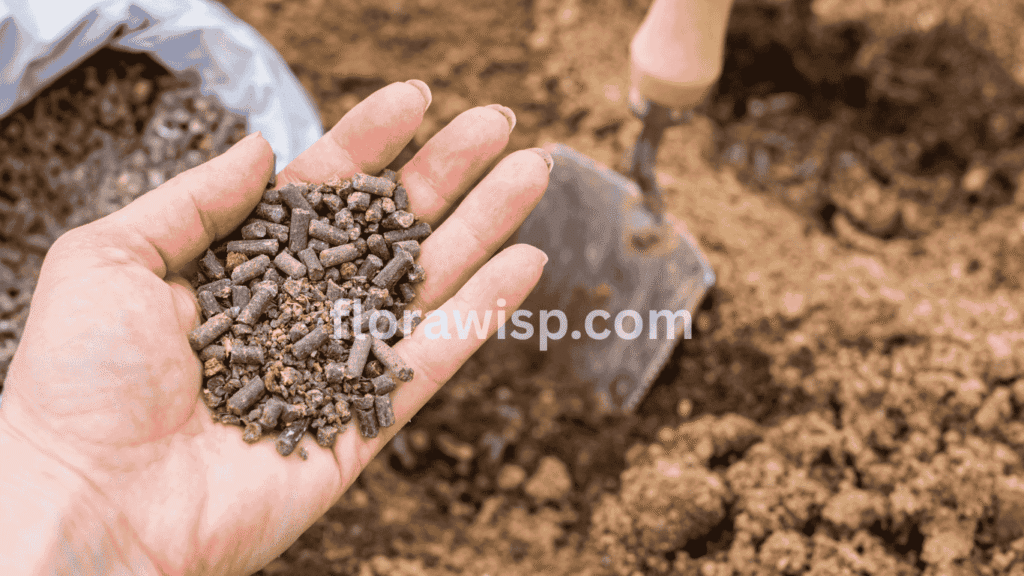
Florida’s soil is not your friend out of the gate. It’s sandy, fast-draining, and low in nutrients.
I used to plant directly into native soil, then wonder why my tomatoes looked anemic. Eventually, I learned to treat the soil like a foundation: if it’s weak, the plant won’t thrive.
Here’s my process:
- Amend the soil with compost, peat moss, and aged manure.
- Add perlite or vermiculite to boost drainage.
- Use raised beds or containers if you’re in flood-prone areas.
Aim for a pH of 6.0–6.8, and always test before planting. Soil test kits are cheap insurance.I once added lime without testing the soil first and it ended up blocking important nutrients my plants needed.
Mulch heavily and rotate crops to keep soil biology healthy. With Florida’s year-round pests, healthy soil is your first line of defense. Growing tomato plants in Florida successfully means giving as much attention to the soil as you do to the plants themselves.
How Often to Fertilize Tomato Plants
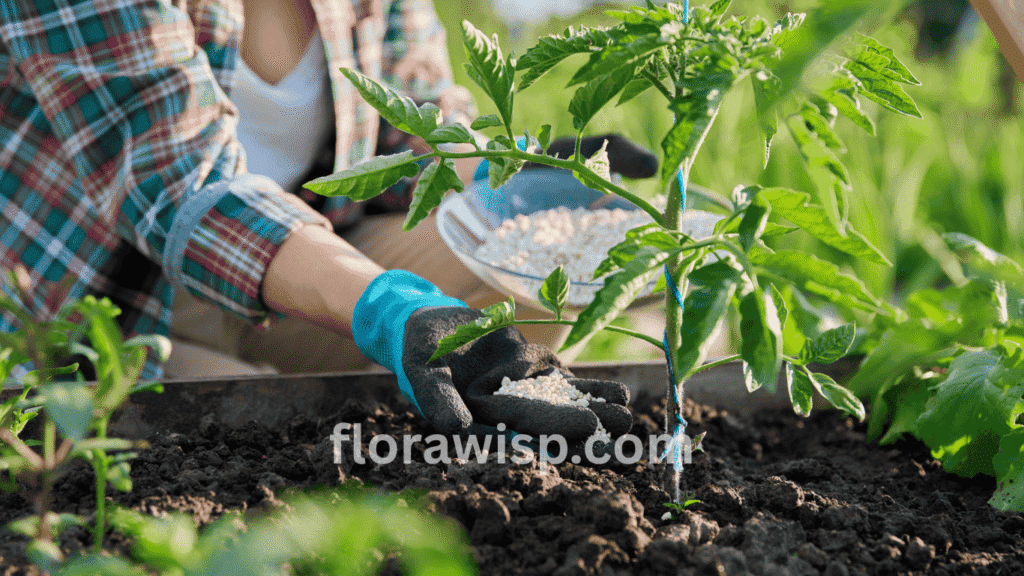
Tomatoes are heavy feeders, especially under Florida’s rapid growth conditions.
Here’s what works for me:
- Seedling stage: Use a diluted liquid seaweed or fish emulsion once a week.
- Vegetative stage: Use a balanced 10-10-10 fertilizer (equal parts nitrogen, phosphorus, and potassium) every 10–14 days to support steady growth, flowering, and fruiting.
- Flowering/fruiting: Switch to a low-nitrogen, high-potassium blend like; 5% Nitrogen (N), 10% Phosphorus (P), 10% Potassium (K).
Avoid overfeeding, it’s easy to do. I learned the hard way when I gave my seedlings more than the recommended dose and noticed they started to struggle. Now, I stick to slow-release granules and only add supplements when the plants actually need them.
Include calcium via crushed eggshells or calcium nitrate to prevent blossom-end rot. I rotate this every third feeding. A consistent schedule beats overcorrection any day.
Aggressive Pruning Techniques in Florida’s Humidity
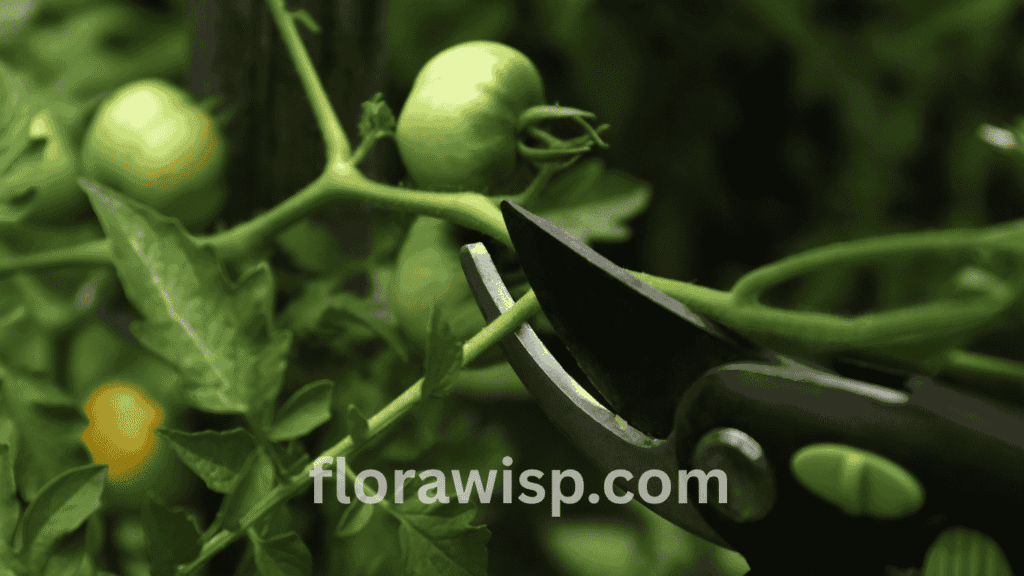
I used to think pruning was optional. In Florida? It’s survival.
Aggressive pruning means removing suckers, bottom leaves, and crowding stems weekly. This keeps air moving and reduces fungal problems. I lost two entire plants to early blight before learning to keep my pruning shears handy.
Start when plants are 12–18 inches tall. Remove any leaf touching the ground. Snip off suckers at leaf joints before they grow thick.
Don’t overdo it, leave enough foliage to shade fruit from the scorching sun. Every Sunday, I do a quick check: if it looks crowded, I thin it.
Pruned plants yield earlier and resist disease longer. It may seem harsh at first, but the payoff is undeniable: cleaner plants, better airflow, and more tomatoes.
How Do You Grow Tomato Plants in Pots in Florida?

If you’re short on space or want better soil control, pots are the way to go.
Use at least a 5-gallon container with drainage holes. I prefer fabric grow bags that breathe better and reduce overheating. Fill with a mix of compost, perlite, and organic potting soil.
Water daily during peak heat, sometimes twice. Container soil dries out fast in Florida’s sun. I place saucers under each pot to catch runoff and reabsorb moisture.
Stake early, prune weekly, and fertilize lightly every two weeks. The portability lets you chase the sun in shady yards. On stormy days, I move them under shelter.
Even in apartment balconies, I’ve pulled full crops from three pots using this method. It’s ideal for first-timers and urban gardeners alike. Growing tomato plants in Florida using containers offers better control over soil quality, moisture, and sunlight, especially in unpredictable weather zones.
Tomato Plant Problems in Florida and Fixes
Florida’s warmth invites a parade of pests and diseases. If you’re growing tomato plants in Florida, Be prepared to deal with:
Pests: Whiteflies, aphids, hornworms, and leafminers. Neem oil and BT sprays help, but hand-picking is often necessary.
Diseases: Early blight, fusarium wilt, and powdery mildew. Rotate crops and use disease-resistant varieties.
I once ignored hornworm droppings. Within a week, half my plant was gone. Now I inspect it daily.
Also, watch for leaf curling, yellowing, and brown spots. These signs show up fast in Florida’s humidity. Keep leaves dry, avoid overhead watering, and prune wisely.
Being proactive beats being reactive. Learn to read your plant like a story it tells you what it needs.
Conclusion
Mastering Growing Tomato Plants in Florida isn’t about getting lucky, it’s about adapting. The humidity, pests, and poor soil don’t make it easy, but with the right timing, varieties, and techniques, it’s absolutely doable.
Whether you’re planting in sandy soil in Jacksonville or pots on a Miami balcony, the core principles remain: start with healthy soil, time your planting based on your zone, prune aggressively, and stay consistent with feeding.
I’ve made my fair share of mistakes, but growing tomato plants in Florida becomes truly rewarding once you understand the timing and care they need. Even trying one new method this season can make a noticeable difference in how well your plants grow. And if you’re thinking of switching things up, here’s a helpful guide on how to plant cherry tomatoes, they’re a great option for Florida’s quick-changing climate and taste amazing fresh off the vine.
FAQs
Q1: When to plant tomatoes in Florida zone 9?
Plant tomatoes in Florida Zone 9 between mid-February and early March for spring, and again in late August for fall. Planting at the right time is crucial. I once planted a week too early and lost every seedling to an unexpected frost. Florida’s Zone 9 can swing quickly between cold snaps and heat waves, so aligning your planting with local frost dates is critical for success.
Q2: When to plant tomatoes in South Florida?
Plant tomatoes in South Florida from early September through February to avoid the intense summer heat and heavy rains. I once planted in June thinking sunshine meant better growth but the combination of humidity and downpours wiped out my entire crop. Since then, I’ve only planted during the cooler months, and the results have been consistently healthy plants and steady fruiting through spring. Timing truly shapes your success.
Q3: When to plant tomatoes in Central Florida?
Start planting tomatoes in Central Florida in February for spring and again in late August for a fall harvest. These windows help avoid frost and extreme heat. One year, I pushed planting into late March, the plants struggled through heat stress and barely fruited. However, planting in early February yielded sturdy growth and a full harvest by May. Timing with local temperature swings makes all the difference.
References
- University of Florida IFAS Extension – Tomatoes in the Florida Garden
- UF Gardening Solutions – Florida Vegetable Gardening Guide
- Florida Master Gardener Program – Growing Tomatoes Successfully in Florida
Gardener, M.Sc. Horticulture
Elara Bennet is a gardening writer from Austin, TX, passionate about sustainable lawns and blooms. Read full bio →








